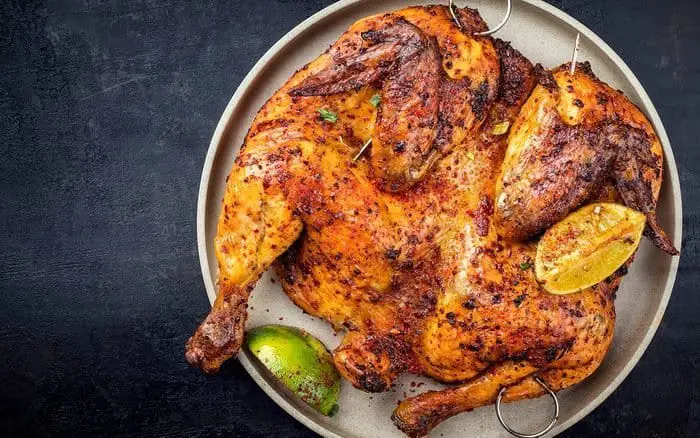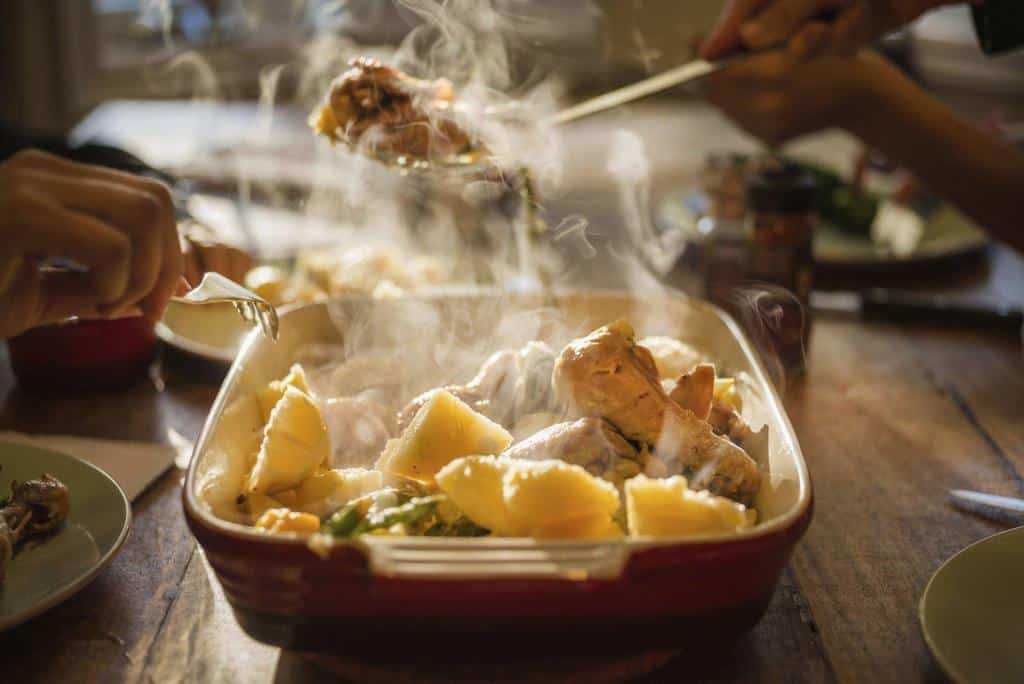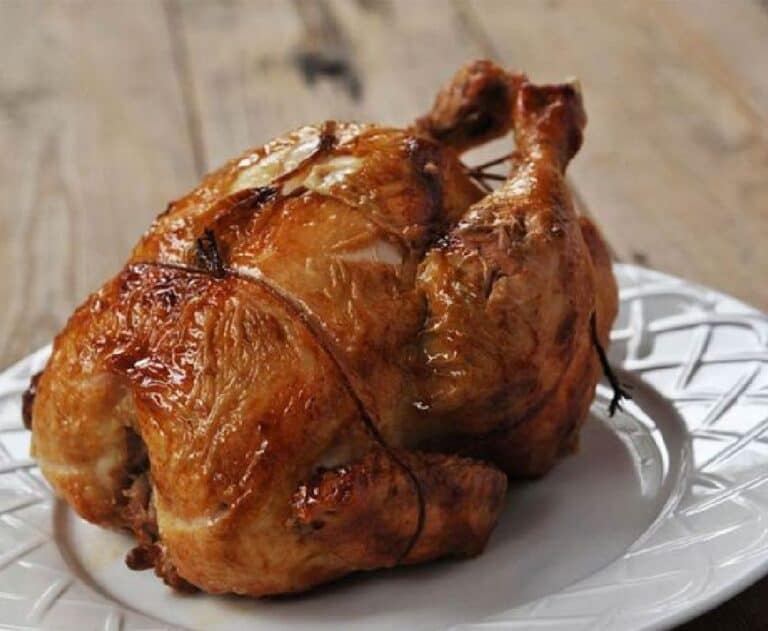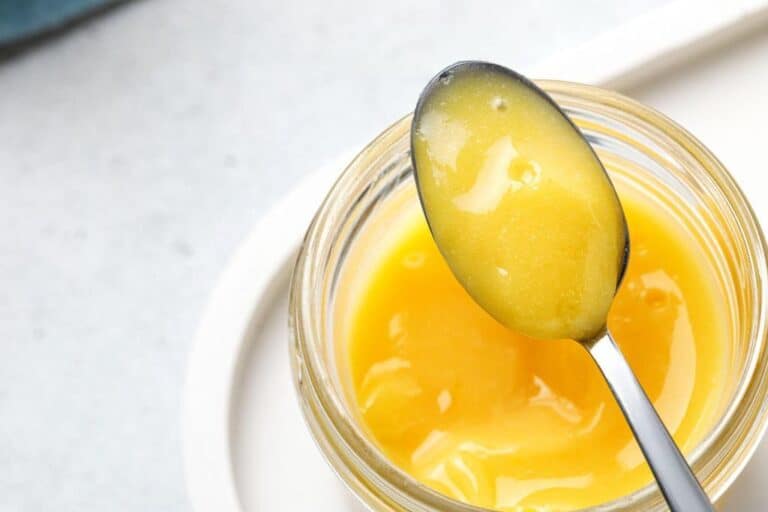Why Does Chicken Taste Weird After Reheating? How to Make Taste Good

Have you ever experienced the disappointment of eagerly reheating leftover chicken, only to find it tasting strange and not nearly as delicious as when it was first cooked? Well, you’re not alone!
The mystery of why reheated chicken often loses its delectable charm has puzzled food enthusiasts for ages. But fret not, for we’re here to unravel the secrets and turn your reheating woes into culinary triumphs!
In this article, we’ll embark on a flavorful journey to understand the science behind the odd taste of reheated chicken. From protein denaturation to moisture loss, we’ll explore the culprits behind this culinary puzzle. But that’s not all! Armed with our arsenal of clever tips and techniques, you’ll learn how to make your reheated chicken taste just as good, if not better, than the original dish.
Get ready to transform your leftover chicken from bland to grand, and say goodbye to lackluster reheats forever!
Why Does Chicken Taste Weird After Reheating?
Before we delve into why the taste is weird, let’s understand why reheated chicken has an odd taste in the first place. When chicken is cooked, its proteins undergo a process called denaturation. During this process, the protein molecules unfold and then refold in a different configuration, which is what gives the chicken its delicious texture and flavor.
Chicken can taste weird after reheating due to a phenomenon called “warmed-over flavor” (WOF). Due to exposure to oxygen, the meat’s polyunsaturated fatty acids and proteins break down, which is the cause of this.
The flavor is often described as stale, rancid, or cardboard-like, and the texture can become rubbery or similar to lunch meat. The deterioration of meat flavor is most noticeable upon reheating, and it is most likely to occur when chicken has been refrigerated for at least 24 hours and then reheated.
The oxidative decomposition of lipids in the meat into chemicals such as short-chain aldehydes or ketones is responsible for the unpleasant taste or odor. The temperature at which you reheat chicken plays a crucial role in determining its taste.
Rapid and uneven reheating can lead to dry, overcooked areas, while insufficient heating may leave cold spots. Finding the right balance is essential to preserving the juiciness and flavors of the chicken.
To avoid WOF, it is best to store chicken properly and reheat it using methods that minimize moisture loss, such as using a microwave-safe lid or wrapping the chicken in damp paper towels.
Tips to Make Your Reheated Chicken Taste Good

Now that we know why reheated chicken can taste weird, let’s explore some methods to make it taste just as delightful as it did when freshly prepared.
1. Opt for Gentle and Even Heating
The key to retaining the juiciness and flavor of reheated chicken lies in the heating method. Instead of using high heat for a short period, opt for gentle and even heating. One of the best techniques is to use a sous-vide machine.
This method involves placing the chicken in a sealed bag and immersing it in a water bath, heating it at a controlled and consistent temperature. By doing so, you ensure that the chicken is heated evenly without overcooking, resulting in tender, juicy, and flavorful chicken.
2. Add Moisture
To combat the dryness that often plagues reheated chicken, consider adding moisture during the reheating process. One way to achieve this is by placing a damp paper towel over the chicken while microwaving it. The towel will release steam and help keep the chicken moist.
Alternatively, if you’re reheating chicken in the oven, you can place a heat-safe dish filled with water in the oven alongside the chicken. The water will evaporate, creating steam that prevents the chicken from drying out.
3. Marinate the Chicken
Before storing your leftover chicken, consider marinating it. Marinating not only enhances the flavor of the chicken but also helps to retain moisture when you reheat it. A simple marinade of olive oil, lemon juice, garlic, and your favorite herbs can do wonders for the taste and texture of reheated chicken.
4. Utilize Flavorful Sauces
Suppose your reheated chicken is still lacking the desired taste. In that case, consider drizzling some flavorful sauces or dressings over it. Whether it’s a zesty teriyaki sauce, a tangy BBQ glaze, a good fish sauce, tomato sauce, or a creamy garlic aioli, sauces can transform the taste of reheated chicken and make it a delightful culinary experience.
5. Revamp with Fresh Ingredients
Don’t hesitate to complement your reheated chicken with fresh ingredients. Add some vibrant greens like baby spinach, arugula, or microgreens to your dish. You can also slice some ripe cherry tomatoes or avocado to add a burst of color and flavor. These fresh elements not only enhance the taste but also give your dish a visually appealing presentation.
Quick Fixes for Unpleasant Flavors in Warmed-up Poultry Dishes
Encountering unpleasant flavors in warmed-up poultry dishes can be disheartening, but fear not, as there are quick fixes to salvage your meal. The most common issue is the development of a dry or rubbery texture, which can occur when the poultry is overcooked during reheating.
To combat this, consider adding a splash of chicken broth or a drizzle of olive oil to the dish before microwaving or reheating it on the stove. These simple additions will help reintroduce moisture and prevent the poultry from becoming overly dry.
Another potential problem is a loss of flavor during the reheating process. To enhance the taste of your warmed-up poultry dishes, consider sprinkling a pinch of your favorite herbs and spices, such as rosemary, thyme, or paprika, to add a burst of savory goodness. Alternatively, a squeeze of fresh lemon or a splash of balsamic vinegar can provide a zesty kick that revives the flavors.
Table: Quick Fixes for Unpleasant Flavors in Warmed-up Poultry Dishes
| Issue | Quick Fix |
| Dry or Rubbery Texture | Add chicken broth or olive oil to reintroduce moisture |
| Loss of Flavor | Sprinkle herbs and spices or add lemon/balsamic vinegar for a burst of taste |
Lastly, if you encounter an overpowering or off-putting taste, consider balancing it with a touch of sweetness or acidity. A drizzle of honey or a spoonful of maple syrup can counteract bitterness, while a splash of apple cider vinegar or a few drops of soy sauce can help balance overly salty flavors.
How to Store Chicken Properly for Reheating
The process of making reheated chicken taste good starts from the moment it is cooked and stored. Here are some essential tips on proper chicken storage:
1. Cool it Quickly
After cooking the chicken, let it cool to room temperature for no more than two hours. Bacteria can grow rapidly at room temperature, leading to foodborne illnesses. To speed up the cooling process, consider dividing the chicken into smaller portions before refrigerating.
2. Store in Airtight Containers
When storing leftover chicken in the refrigerator, use airtight containers to prevent it from absorbing odors and flavors from other foods. This will also help retain the chicken’s moisture, preventing it from drying out.
3. Label and Date
Always label your containers with the contents and the date of storage. This way, you can easily identify how long the chicken has been in the refrigerator and avoid eating it past its prime.
4. Use the Freezer for Longer Storage
If you don’t plan to consume the leftover chicken within a few days, consider freezing it. Freezing slows down bacterial growth and preserves the chicken’s quality. However, ensure you wrap the chicken properly and remove as much air as possible to prevent freezer burn.
Does Microwaving Affect the Taste of Leftover Poultry?
Microwaving is a widely used method for reheating leftover poultry, but it can indeed affect its taste. The uneven distribution of heat during microwaving may lead to some areas becoming overcooked and dried out while others remain undercooked, resulting in an inconsistent texture and taste.
Additionally, the texture of the poultry can change due to the steaming effect that results from trapping moisture in the container or wrap. The original cooking method of the poultry also plays a significant role in how it will taste after microwaving. Grilled, fried, or roasted poultry may lose their crispy exterior and succulent juiciness when microwaved, while poached or braised poultry might be less impacted.
To minimize the negative effects of microwaving on the taste of leftover poultry, there are some best practices you can follow. Use a lower power setting and microwave in short intervals to prevent overcooking or drying out.
Adding a bit of moisture to the container, such as a few drops of water or broth, before microwaving can help maintain the juiciness of the poultry. For a crispy exterior, consider using a combination of reheating methods, starting with microwaving to heat the interior and finishing off in a preheated oven or using a hot skillet with a little oil.
More: Is There a Way To Save and Moisten Overcooked Chicken?
Table: Impact of Microwaving on Different Types of Poultry
| Type of Poultry | Microwaving Impact on Taste |
| Chicken | More forgiving, but may still experience texture changes |
| Turkey | More susceptible to drying out due to leaner meat |
| Duck | Texture and taste may be affected due to lower fat content |
Is It Safe to Reheat Chicken Multiple Times?
Reheating chicken multiple times raises concerns about food safety. While it is generally safe to reheat chicken once after it has been cooked, doing so repeatedly can increase the risk of foodborne illnesses.
Each time chicken is reheated, it goes through a cycle of cooling, storage, and reheating, providing ample opportunities for harmful bacteria to multiply. Prolonged exposure to temperatures within the “danger zone” of 40°F to 140°F (4°C to 60°C) allows bacteria to thrive and potentially reach dangerous levels.
Table: Potential Risks of Reheating Chicken Multiple Times
| Reheating Cycle | Bacterial Growth and Food Safety Risk |
| First Reheating | Minimal risk with proper temperature control and immediate consumption |
| Second Reheating | Increased risk as bacteria multiply during cooling and storage |
| Third Reheating | Further increased risk of harmful bacteria reaching unsafe levels |
To ensure the safety of reheated chicken, it is essential to follow some best practices. Firstly, refrigerate cooked chicken promptly and store it in airtight containers to slow down bacterial growth.
When reheating, make sure to reach an internal temperature of 165°F (74°C) throughout the chicken to kill any potential pathogens. Avoid reheating chicken multiple times if possible, and instead, portion it into smaller servings before storing to only reheat what you plan to consume.
Innovative Reheating Techniques for Better Flavor
| Reheating Technique | Description |
| Sous Vide Method | Gently reheats chicken at a precise, controlled temperature to retain moisture and flavor. |
| Steam Reheating | Uses steam to reheat chicken evenly, reducing the risk of dryness and maintaining tenderness. |
| Oven or Air Fryer Reheating | Restores the crispiness of fried chicken while ensuring the interior remains moist and flavorful. |
| Using Broths and Juices | Reheats chicken in flavorful broths or juices to infuse it with additional taste and moisture. |
Mastering these innovative reheating techniques can breathe new life into your leftover chicken and make it just as delicious as when it was freshly cooked. So, the next time you have some leftover chicken, you’ll know exactly how to elevate its flavor and enjoy a satisfying meal.
Conclusion
In conclusion, understanding the factors that influence the taste of reheated chicken, along with implementing the best practices and innovative reheating techniques, can turn your leftovers into a culinary delight.
Reheated chicken can undoubtedly taste weird due to the denaturation of proteins and the loss of moisture during the reheating process. However, by employing proper reheating techniques and incorporating moisture, marination, and flavorful sauces, you can make your reheated chicken taste just as good as it did when freshly cooked. Remember to store the chicken correctly to maintain its quality for reheating.
FAQs on Why Chicken Taste Weird After Reheating
Why does leftover chicken taste different?
Leftover chicken tastes different because of protein denaturation during the initial cooking process and moisture loss when reheated. Reheating methods like microwave or oven-heating can cause uneven heating, resulting in dry and less flavorful chicken.
Can I reheat chicken in the microwave?
Yes, you can reheat chicken in the microwave, but it’s essential to do it correctly. To prevent dryness, cover the chicken with a damp paper towel or microwave-safe lid. Use lower power settings or short bursts of heating to ensure even reheating.
What are the best ways to store cooked chicken for reheating?
The best way to store cooked chicken for reheating is to cool it quickly and store it in airtight containers. Label and date the containers for easy identification. For longer storage, consider freezing the chicken.
How long can you keep cooked chicken in the refrigerator?
Cooked chicken can be kept in the refrigerator for up to 3-4 days. Ensure it’s stored properly to maintain quality and avoid potential foodborne illnesses.
Can reheated chicken become toxic or harmful to your health?
Reheated chicken can be harmful if not reheated properly or left at room temperature for too long. Bacterial growth is a concern, so ensure thorough reheating to at least 165°F (74°C).
What are the signs that indicate chicken has gone bad and should not be reheated?
Signs that chicken has gone bad include a sour or foul smell, a slimy texture, or a change in color. If you notice any of these signs, avoid reheating and discard the chicken.
Should I remove the bones from the chicken before reheating to improve the taste?
Removing the bones before reheating chicken is not necessary for taste improvement. Proper reheating methods and moisture retention techniques are more effective in restoring its flavor.
Does marinating the chicken before reheating really make a difference in taste?
Marinating the chicken before reheating can make a difference in taste, as it adds flavor and helps retain moisture during the reheating process.
Can I use sauces or condiments to mask the weird taste of reheated chicken?
Yes, sauces or condiments can help enhance the taste of reheated chicken. Try using flavorful sauces like teriyaki, BBQ, or garlic aioli to elevate the overall experience.





